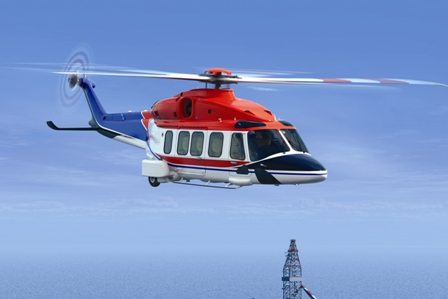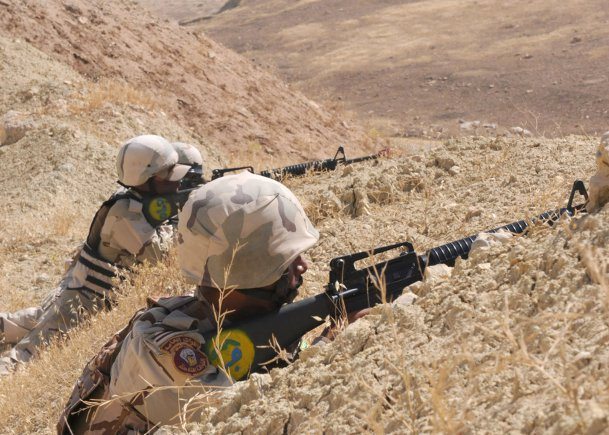AgustaWestland, a Finmeccanica company, is proud to unveil the AW189, a new generation affordable multi-purpose twin-engine 8-tonne class helicopter designed in response to the growing market demand for higher payload, longer range and higher productivity.
The AW189 complements the modern range of AgustaWestland commercial helicopters and will be certified in 2013 and enter service in early 2014. The AW189 is being developed to perform a wide range of roles including offshore transport, search and rescue, passenger transport and a variety of parapublic missions.
Speaking at the unveiling ceremony Bruno Spagnolini, CEO, AgustaWestland said “It gives us great pleasure unveiling the latest addition to our expanding commercial helicopter product range here at the Paris International Air Show. The AW189 demonstrates our commitment to offer the market the most advanced, versatile and cost/effective helicopter in its class by working in partnership with our customers to ensure the AW189 will meet their present and future requirements.”
Powered with two General Electric CT7-2E1 engines, equipped with FADEC and built-in particle separators, the AW189 will have class leading performance. The aerodynamically efficient airframe, rotor system and the innovative rotor blade design will ensure the AW189 delivers low fuel consumption, high cruise speed and an outstanding range capability. These factors will enable the AW189 to achieve low seat mile costs and low fuel burn.
The spacious unobstructed cabin is configured with 16 seats as standard. Seating options include a high density 18 seat layout or an ultra-long range 12-seat configuration with a number of forward and backward facing layouts. A mix of seats, mission consoles, dedicated equipment and litters can be installed according to the operational requirement. A modular fuel system, that is quick to fit and remove, ensures the optimum mission specific trade-off between passengers and distance can be achieved.
Exceptional external visibility and the deployment of the latest in avionics technology make the AW189 the pilot’s choice. The open architecture avionics suite includes a fully digital glass cockpit with four 8” x 10” displays (AMLCD), a 4-axis dual-duplex digital automatic flight control system (DAFCS) and dual Flight Management System (FMS). All contribute to minimising pilot workload during VFR/IFR flight. Single pilot IFR certification is a design objective. The avionics suite is suitable for the NextGen satellite-based IFR navigation (with vertical navigation and precision approaches) and advanced communication and surveillance requirements.
The AW189 sets new standards in situational awareness in low visibility flying conditions and has an all-weather capability thanks to its Synthetic Vision System, which emulates the surrounding topography, and to the Enhanced Vision System which sees through darkness, smoke, dusk and light fog, further improving operational safety.
The AW189 will meet the very latest international regulatory safety requirements (EASA / FAA Part 29, JAR OPS 3 / EU-OPS). Structural crashworthiness has been a priority in the design of the airframe, fuel system and seats. The helicopter main gearbox will have a 30 min ‘dry-run’ capability and Cat. A, PC1 / PC2e performance will allow take-offs and landings with high payloads and superior safety margins.
The cockpit design, incorporating the latest in advanced situational awareness technologies, will reduce crew workload and enhance safety. In the event of an emergency landing or ditching, seats are aligned with large push-out windows maximising egress speed. There is an emergency exit window for every two passengers. Emergency floatation aids enable the AW189 to remain stable in up to sea state 6 conditions, while life rafts are positioned for access directly from the helicopter cabin.
A limited number of components are subject to overhaul and retirement. Maintenance operations have been optimised to reduce downtime for flight intensive schedules. The availability of advanced diagnostic tools to continuously monitor the health of systems provides additional safety and reduced aircraft down time.
The AW189 will benefit from the extensive and expanding AgustaWestland worldwide support network already serving the offshore oil and gas industry. A comprehensive array of simulator and training devices will progressively be made available to serve the worldwide AW189 customer base.
The AW189 is optimized for the long range, deep water missions typical of current and evolving offshore oil and gas support operations, but that are equally relevant to several other missions including long range SAR. The combination of speed and exceptional passenger comfort available in the large cabin also make the AW189 ideal for VIP/corporate and onshore passenger transport operations. The standard auxiliary power unit (APU) allows the cabin and cockpit air conditioning to be operated without the main engines running for additional passenger comfort. A low cost per seat-mile, together with a long range capability, make this helicopter an ideal alternative to more expensive 19-seat helicopters.











